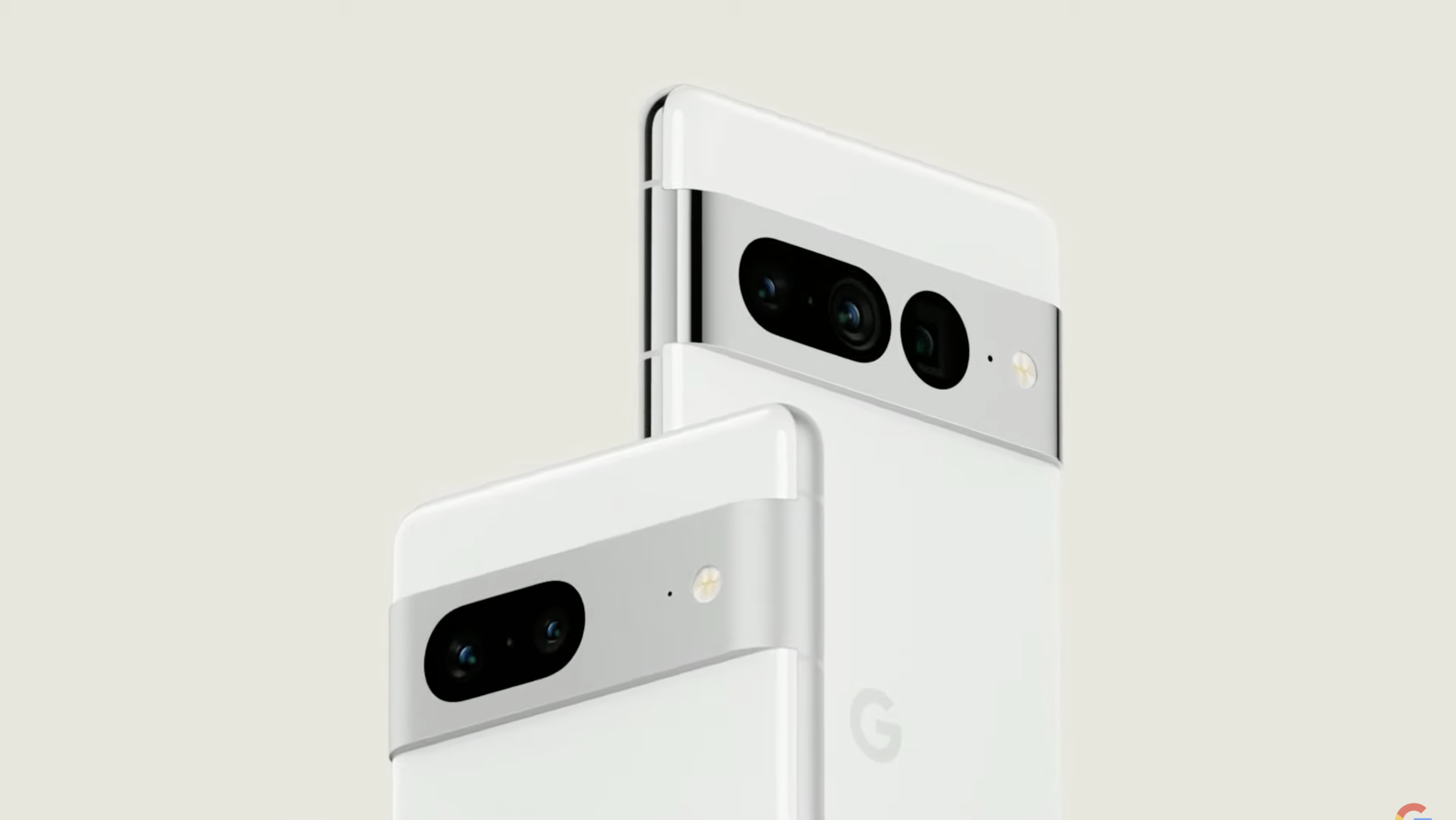Google Pixel 7 Pro just tipped for big upgrade to fight iPhone 14 Pro
A brighter display could make Google's flagship more competitive

The Pro version of the Google Pixel 7 could address a long-standing issue with Google's phones when it arrives this fall. And the improvement just might position the Pixel 7 Pro to better challenge the likes of the iPhone and Samsung's Galaxy S devices.
That's according to display specs posted on Twitter by Mishaal Rahman, a senior technical editor for Esper. Based on leaked specs from a Pixel 7 Pro prototype, Google's upcoming phone appears to be using a Samsung S6E3HC4 display, which would be a change from the Samsung S6E3HC3 used on the Pixel 6 Pro.
More significantly, Rahman calculates the new display will translate into a brighter screen for people who pay up Pixel 7 Pro. At its natural setting, the Pixel 7 Pro figures to max out at 600 nits of brightness compared to 500 nits for the Pixel 6 Pro.
Pixel 6 Pro @ 100% brightness: 500 nitsPixel 7 Pro @ 100% brightness: 600 nitsPixel 6 Pro w/ HBM: 800 nitsPixel 7 Pro w/ HBM: 1000 nitsThis is all at 100% APL, so HBM at lower APL probably exceeds 1200 nits.The BOE and P10/C10 panels also list 1000 nits max for HBM.June 22, 2022
The news is even better when it comes to the phone's high brightness mode, where Rahman calculates a 1,000-nit brightness level for the Pixel 7 Pro. That's an improvement over 800 nits for the Pixel 6 Pro. Those figures reflect a phone with a maxed-out average picture level (APL). At a lower APL, Rahman tweets, the Pixel 7 Pro could hit 1,200 nits.
If true, that would put the Pixel 7 Pro in the company of both the iPhone 13 Pro and Samsung's higher-end Galaxy S22 models. The latest flagships from Apple and Samsung both put an emphasis on brighter displays that are easier to see in direct light. In contrast, Google's phones prior to the Pixel 7 have often been criticized for being too dim.
Other rumored upgrades for the Pixel 7 series include an improved selfie camera for the basic model, a next-gen Google Tensor chipset, plus a slightly smaller handset size for the Pixel 7.
Current display brightness: Pixel 6 Pro vs. iPhone 13 Pro
Take the Pixel 6 Pro, which had a peak brightness of 842 nits when we tested it last year. Turn off adaptive brightness, though, and our reading on a light meter dropped to 495 nits. The iPhone 13 Pro hit a max brightness of 825 nits with adaptive brightness turned off; with the feature enabled, brightness hit 1,024 nits. Both results outpaced the Pixel 6 Pro.
Get instant access to breaking news, the hottest reviews, great deals and helpful tips.
The iPhone 14 is arriving later this fall — likely just before the Pixel 7's ship date, if Apple and Google stick to their traditional release windows — and we don't expect the iPhone 14 Pro to get any dimmer. If anything, you can imagine Apple looking to bolster the brightness of its phones, though the rumor mill has been quiet on that front, focusing largely on the likelihood of the iPhone 14 Pro getting an always-on display.
Google is also under pressure to improve the brightness of its displays from its fellow Android phones. The Galaxy S22 Plus and Galaxy S22 Ultra made a lot of hay by featuring a peak brightness of 1,750 nits. The reality was a bit off from those claims — we measured the Plus at 1,150 nits and the Ultra at 1,359 in their HDR mode — but that's still a lot brighter than what Google's phones have offered.
With phones increasingly offering similar features, display brightness has become an area where phone makers can make their products stand out. If you're looking for a new handset, the thinking goes, you're going to want one that's visible in all kinds of lighting conditions without washing out colors or obscuring other details. Based on the leaked rumor above, Google seems to have gotten the memo.
Apart from brightness, Rahman isn't expecting big changes for the Pixel 7 Pro display. The new phone will reportedly feature a 3120 x 1440 resolution plus a 10-120Hz refresh rate. Both those features match the Pixel 6 Pro.
Google previewed the Pixel 7 during May's Google I/O developer conference. Apart from showing off its modified design and confirming that a next-generation Tensor chipset will power this device, few other Pixel 7 details have emerged. Expect that to change between now and the Pixel 7 release later this year.
Next: FCC commissioner demands Apple and Google remove TikTok app — but it will stay on your Google Pixel 6 for now.
Philip Michaels is a Managing Editor at Tom's Guide. He's been covering personal technology since 1999 and was in the building when Steve Jobs showed off the iPhone for the first time. He's been evaluating smartphones since that first iPhone debuted in 2007, and he's been following phone carriers and smartphone plans since 2015. He has strong opinions about Apple, the Oakland Athletics, old movies and proper butchery techniques. Follow him at @PhilipMichaels.

